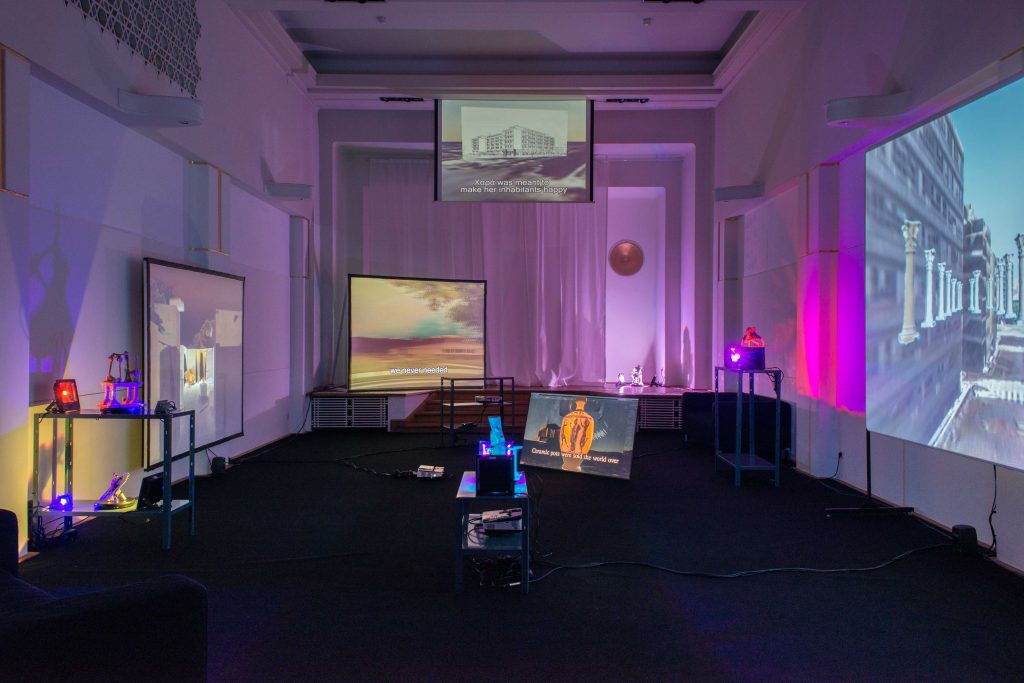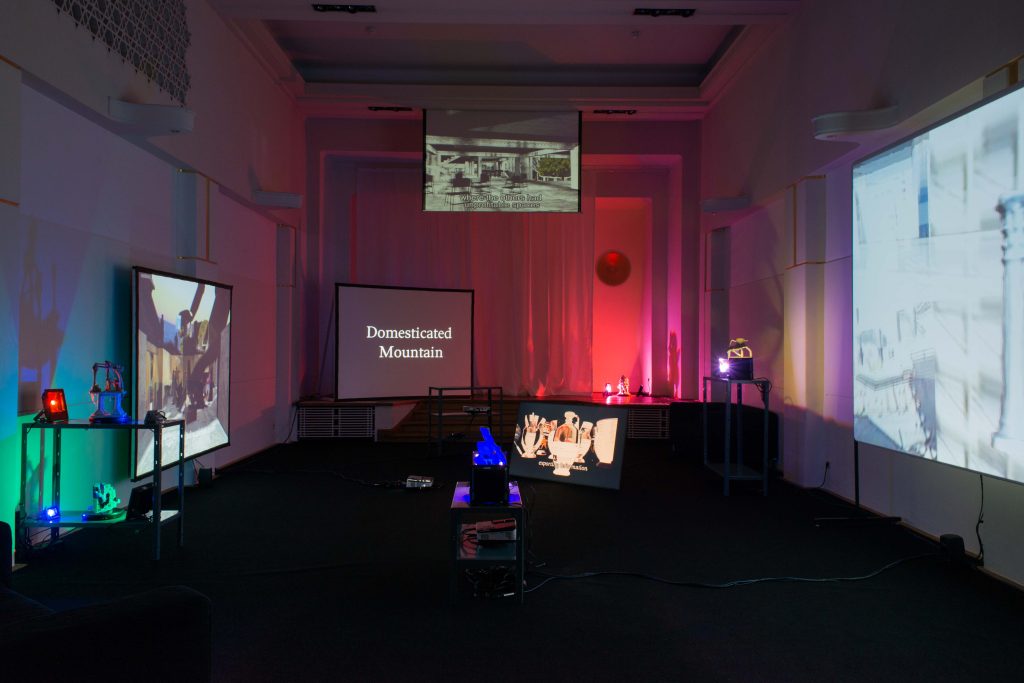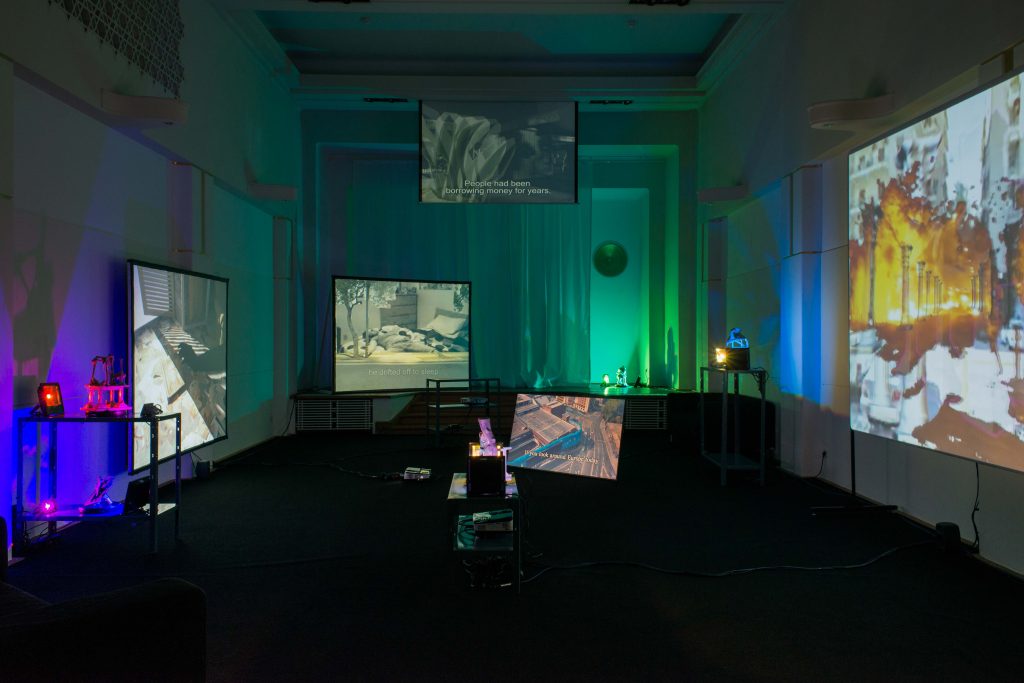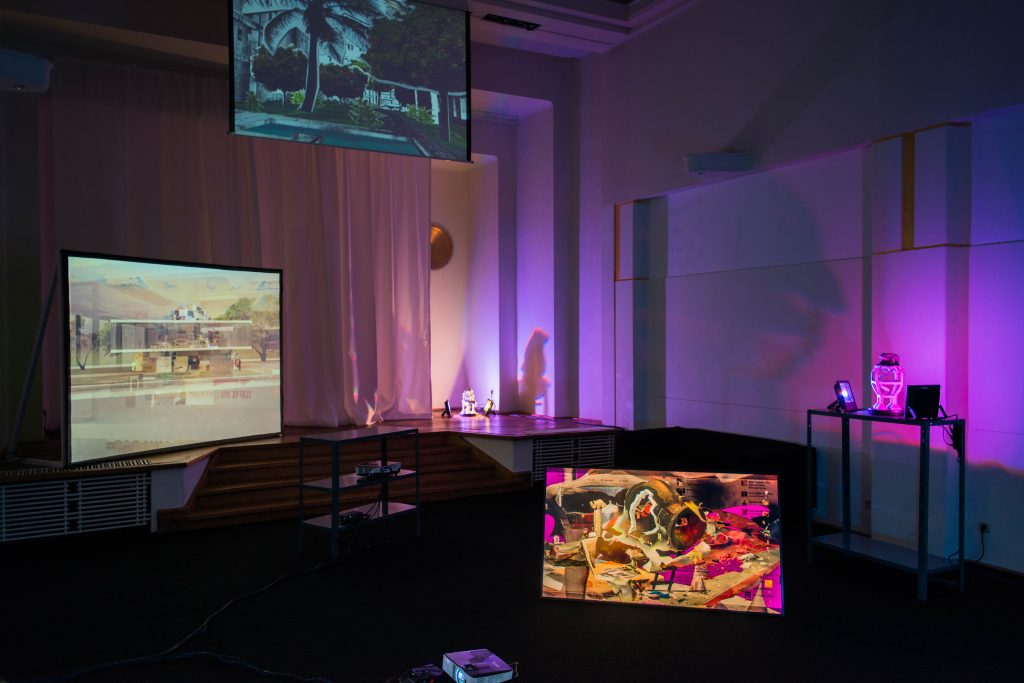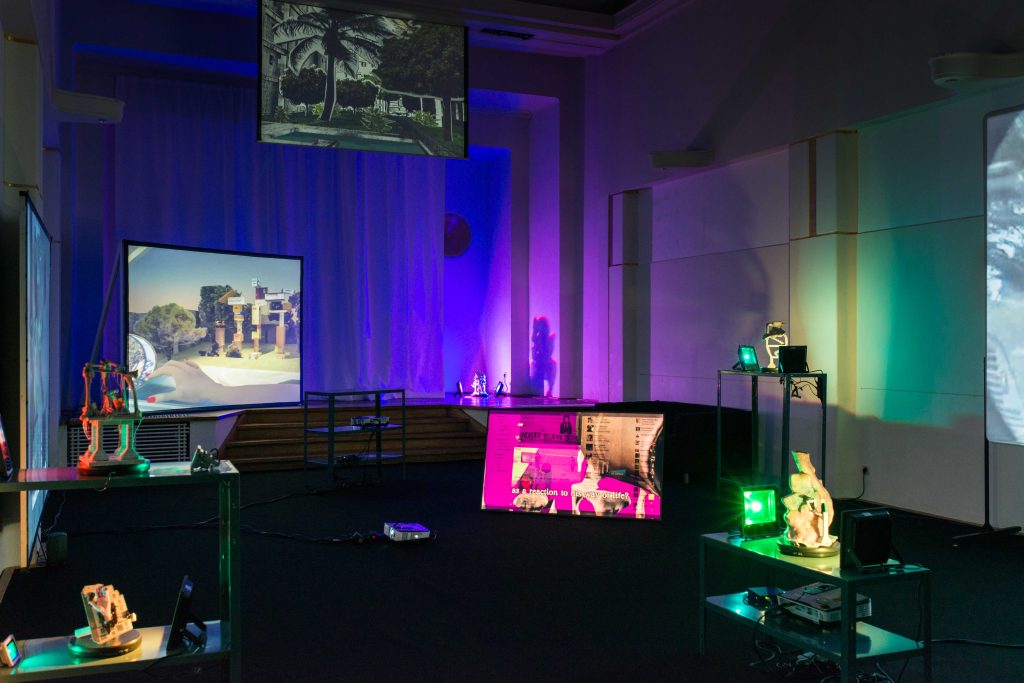Andreas Angelidakis
I used to build my feelings, now I watch them leave
February 7, 2018–March 24, 2018La Loge, Brussels
Drawing on two main sources of inspiration – the city of Athens and the Internet –, the work of Andreas Angelidakis deals with ruins and antiquities, whether they be ancient or modern; real or virtual. His animated videos and 3D-printed ornaments generally rely on existing buildings and digital artifacts that often look dated or disposable, and which operate as allegories of architectural and historical conditions. In films like Vessel, Domesticated Mountain, and TROLL or the Voluntary Ruin, Angelidakis gives buildings a voice, treating them as if they were anthropomorphic creatures driven by their own internal desires. Though forms of repression (financial, technological, social, or sexual) and the structural shock of the Greek government debt crisis have rendered these edifices silent and obsolete, Angelidakis presents them as ruins, nature, or specters – half building, half something else. Far from being inert, these ‘living’ buildings have emancipated themselves as they transition into a state of timelessness. Ultimately, they will overcome the false cult of progress and futurity.
Rather than the fixed materialisation of a design into a built reality, Angelidakis is interested in architecture as an immaterial idea that floats and transforms through the different vectors of an evolving society, continually producing affections and feelings like an organic body. At La Loge, a personal voice over blends with the ambient soundscapes of the films, creating a specific situation to relate to the selection of films and bibelots* on view. The five videos – Domesticated Mountain, Troll, or the Voluntary Ruin, Iolas, Vessel, and Unauthorized – are made in the period between 2011 and 2016, and are the result of Angelidakis’ wanderings and encounters in the online realm, collaged together with found footage and screen captures, and rendered into a lo-fi artisanal narrative. In the installation, each video can be viewed as a singular work in its own right, saying something about buildings’ emotional life (take for example the modernist building Chara* who longs to become a mountain in order to find inner peace, or the suburban house which transforms into a domesticated mountain as the result of internet shopping and the accumulation of cardboard boxes), while also taking part into a larger part in Angelidakis’s metanarrative – a performance in five acts of sorts. The films are accompanied by a series of slowly rotating bibelots bathing in coloured lights. These 3D models – a vessel, a flower pot, a bone domino – are small structures based on found objects which the artist imagined as architecture. The bibelots are remnants of forgotten objects, fantasy ruins, or hard copies of expired online constructions.
The narrative strategies employed in the exhibition (streams of consciousness and melodramatic scores, to name but a few) are the same Angelidakis might have used to analyse the buildings and cities appearing in and out the exhibition. Esoteric and generous at once, the show excavates the subconscious aspects embedded in the work, and offer a glimpse into the artist’s psyche. Angelidakis’ proposal not only unearths processes of fantasy and construction but also offers room for his personal memories and references to guide the work.
Curated by Anne-Claire Schmitz
* Bibelots are small decorative or commemorative objects that have no particular use and often are of low value.
* Chara means Joy and is the name of a utopian, modernist building that takes up an entire city block in Athens.The well-intentioned, but failed project was constructed by architects Spanos and Papailiopoulos in 1960 to house low-income citizens, but, in a rapidly changing urban context, no longer fulfills its purpose.
About the artist
Andreas Angelidakis was born in Athens in 1968. He studied Architecture at the Southern California Institute of Architecture (SCI-Arc) and was trained as an architect at Columbia University in New York where he graduated in 1995. Recent solo exhibitions include Soft Ruin in ALT Art Space, Istanbul (2016) in which the artist pondered over simulated ruins immune to decay, 1:1 Period Rooms at Het Nieuwe Instituut in Rotterdam (2015), an installation using period rooms from the collection of the Amsterdam Museum, and Every End is a Beginning, the artist’s 2014 retrospective at the National Museum of Contemporary Art, Athens (EMST). In 2017 he participated in the documenta 14 in Athens and Kassel with a series of works including Unauthorized and Demos, a collection of modules which served as seating during the Parliament of Bodies. In 2015 he participated in the first edition of the Chicago Architecture Biennial with a series of bibelots, and in 2014 he made the Preliminary Statement for the 8th Berlin Biennial in KW with CrashPad, a multi-purpose room with a library drawing upon the idea of the nineteenth-century salon. He has curated exhibitions including Fin de Siècle at the Swiss Institute in New York (2014), an eclectic and theatrical show including 43 iconic chairs, and The System of Objects, DESTE Foundation for Contemporary Art, Athens (2013), inspired by Jean Baudrillard’s seminal 1968 book.
